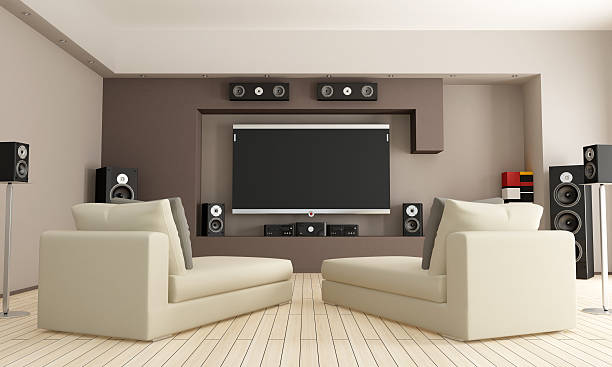Setting up a multi-room audio system allows you to enjoy music in every corner of your home, seamlessly controlled from one central device. In this article, we’ll guide you through the essential steps and considerations for creating an efficient and high-quality multi-room audio setup.
Selecting the Right Equipment

Choosing the appropriate equipment is crucial for the success of your multi-room audio system. Start by evaluating your home’s layout and determining how many rooms you want to include in your setup. Consider wireless speakers for ease of installation, or wired speakers for a more stable connection. It’s also important to invest in a reliable central hub, such as a smart speaker or an AV receiver, capable of managing multiple audio outputs simultaneously.
One popular choice is the Sonos system, known for its robust performance and user-friendly interface. Other reputable brands include Bose, Yamaha, and Denon. Assess the compatibility of your devices with these systems to ensure seamless integration. Additionally, don’t skimp on quality – a good audio system can significantly enhance your overall listening experience.
Planning Your Speaker Placement
Once you have selected your equipment, the next step is to strategically plan your speaker placement. Positioning the speakers correctly can make a significant difference in sound quality. Aim to place speakers at ear level when seated, and avoid obstructing them with furniture or other objects. In larger rooms, consider using multiple speakers to create a balanced sound.
Make a map of your home and mark the potential speaker locations. Ensure that each speaker connects smoothly to the central hub and is within the range of your wireless network if you’re using wireless speakers. For wired systems, plan out the routing of cables to avoid tripping hazards and maintain a clean aesthetic.
Setting Up the Central Hub
Your central hub is the brain of your multi-room audio system, managing all the audio signals sent to various speakers. Begin by installing the central hub in a location where it can easily communicate with all connected speakers. Connect it to your home network using either a wired Ethernet connection for best performance or a strong Wi-Fi signal.
Follow the manufacturer’s instructions for setting up the hub. This often involves downloading an app or software on your smartphone or computer for easy control. Ensure that the firmware is up to date to take advantage of the latest features and improvements. Once set up, test each speaker to verify it receives audio correctly from the hub.
Configuring Your Multi-Room Audio System
Configuration is an essential step to ensure optimal performance and ease of use. Start by naming each speaker based on its location (e.g., Living Room, Kitchen) for easy identification. Configure the audio settings for each room, such as adjusting the volume levels and equalizer settings to suit the room’s acoustics.
Most systems offer multi-room synchronization, allowing you to play the same audio in all rooms or different content in each room. Use the central hub or the accompanying app to create groups and zones for various audio experiences. For example, you might group the living room and kitchen speakers together while keeping bedroom speakers separate.
Testing and Troubleshooting
After setting up and configuring your system, it’s crucial to test it thoroughly. Play a variety of audio content in different configurations to ensure everything works as expected. Walk through your home to check for any dead spots or areas where the sound quality is inconsistent.
If you encounter issues, consult the user manual or the manufacturer’s support resources. Common problems might include connectivity issues, interference from other devices, or software glitches. Regularly update your system’s firmware to benefit from the latest fixes and enhancements. Maintain a troubleshooting checklist to quickly resolve any issues that arise.
Conclusion
Setting up a multi-room audio system can transform your listening experience, allowing you to enjoy high-quality sound throughout your home. By carefully selecting your equipment, planning speaker placement, setting up a central hub, and configuring your system, you can create a seamless and immersive audio environment. Thorough testing and troubleshooting will ensure your system operates flawlessly, providing endless hours of enjoyable listening.
FAQ
1. Can I use my existing speakers for a multi-room audio system?
Yes, you can use existing speakers if they are compatible with the central hub or can be connected via an adapter. However, it’s essential to ensure they fit the overall design and performance of your desired setup.
2. Do I need professional installation for a multi-room audio system?
While professional installation can ensure optimal setup, many systems are designed for easy DIY installation, especially wireless setups. Follow the manufacturer’s instructions, and consult online resources if needed.
3. How does a multi-room audio system connect to my home network?
Most multi-room audio systems connect to your home network via Wi-Fi or Ethernet. Ensure strong signal strength and consider using a mesh network to improve coverage throughout your home.
4. Can I control my multi-room audio system with voice commands?
Yes, many modern multi-room audio systems integrate with voice assistants like Amazon Alexa, Google Assistant, or Apple Siri, allowing you to control your system using voice commands.
5. What streaming services are compatible with multi-room audio systems?
Most multi-room audio systems support popular streaming services like Spotify, Apple Music, Amazon Music, and more. Check the compatibility list provided by the manufacturer to ensure your preferred services are supported.
